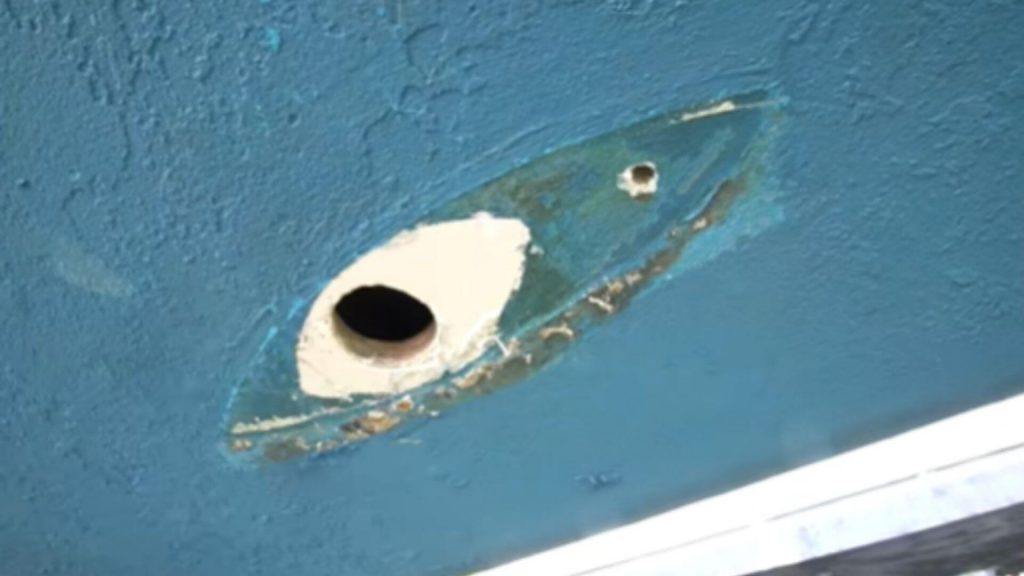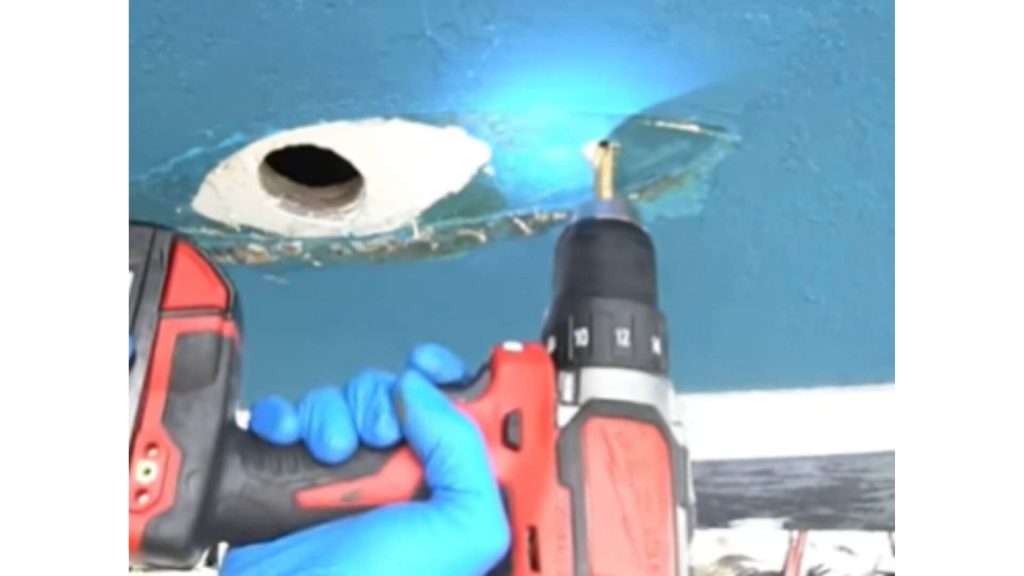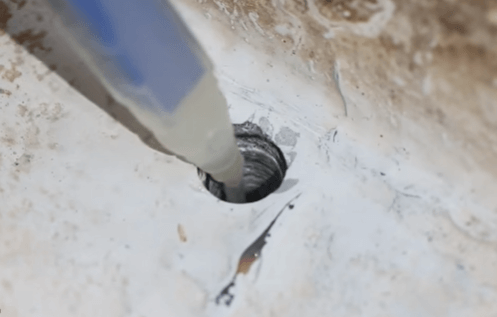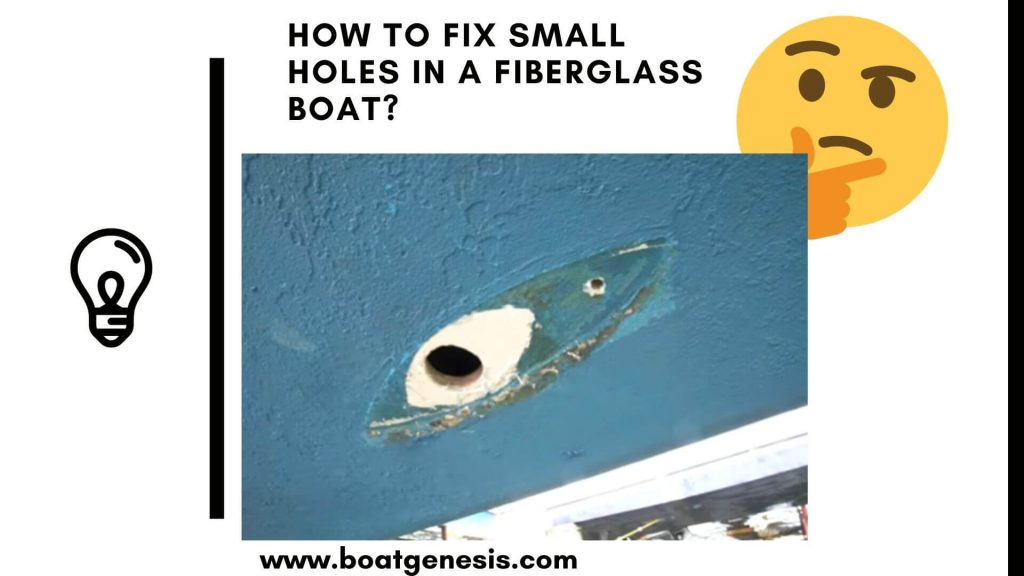Uh oh! You peeked at the bottom of your fiberglass boat and spotted a little hole letting in water. Huge damages need a professional, but small holes you can fix yourself.
Let me explain how step by step.
How to Fix Small Holes in a Fiberglass Boat?
Step 1: Find the Small Hole

Clean the space around the hole really well so you can see it. Figure out if the hole goes just through the outer gelcoat or deeper into the fiberglass.
Step 2: Get Supplies
For little gelcoat cracks, get special putty that cures in the sun. For deeper holes in fiberglass, use putty with a hardener mixed in. Read the labels to get the right stuff.
Step 3: Open Up the Hole Space
Use 180-grit sandpaper to rough up the gelcoat around the hole. This helps the putty grab on better.
Once you start seeing the white gel coat, you are good.
Make holes wider so putty can get deeper inside.
Use a drill bit to make the hole a little bigger. This tool will clean up the surface and make sure all the contaminants are removed.

Step 4: Squish Putty Into Hole

Knead putty until color is solid. Squish it into the hole, really packing it in deep. Put extra so when it dries there’s still enough putty.
Smooth it out. Let harden completely.
Step 5: Make It Smooth
Check if the putty patch sinks in at all as it hardens. If yes, add more putty.
Once hard, sand smooth using 320 grit sandpaper on a sanding block and blend edges into the nearby gel coat. Wipe away sanding dust.
Step 6: Look for Leaks
The last step is to test it! Let the patch cure fully, then put the boat area underwater to see if fixed. No more leaks? Great success! Sail away, my friend!
There you go – a simple fix for minor fiberglass boat holes. For big damage, still see a professional. But tiny holes you can tackle and be back sailing in no time.
Just take it step-by-step. Now let’s get you patched up!
FAQ
A: Small holes are less than 1/4 inch (6mm) in diameter. Anything larger than that should be inspected and repaired by a professional.
A: No, it’s important to properly repair even tiny holes in fiberglass hulls. If left alone, they can allow water to enter and cause bigger issues over time.
A: You’ll need sandpaper, putty or patching compound formulated for fiberglass repair, plastic applicators, gelcoat spray paint, gloves, and masks. Ensure your putty works for the hole depth.
A: Cure times vary by product but expect at least 24 hours for deepest holes. Check packaging. Gelcoat spray paint also requires ample drying time before floating your repaired boat.
A: Some putties work for both while others are formulated specifically for bonding to gelcoat or fiberglass. Assess your unique hole before selecting repair putty.
A: Yes – don’t use household putty or sealants as they lack the adhesion properties needed for boats. Don’t rush curing times before sanding or painting. Don’t ignore bigger underlying issues requiring professional repair.
I hope these fiberglass boat hole Q&As help in deciding whether to DIY or hire a pro! Let me know if you have any other small hole questions.
You can also check out my full article on fixing any type of hole in a Fiberglass boat here.

